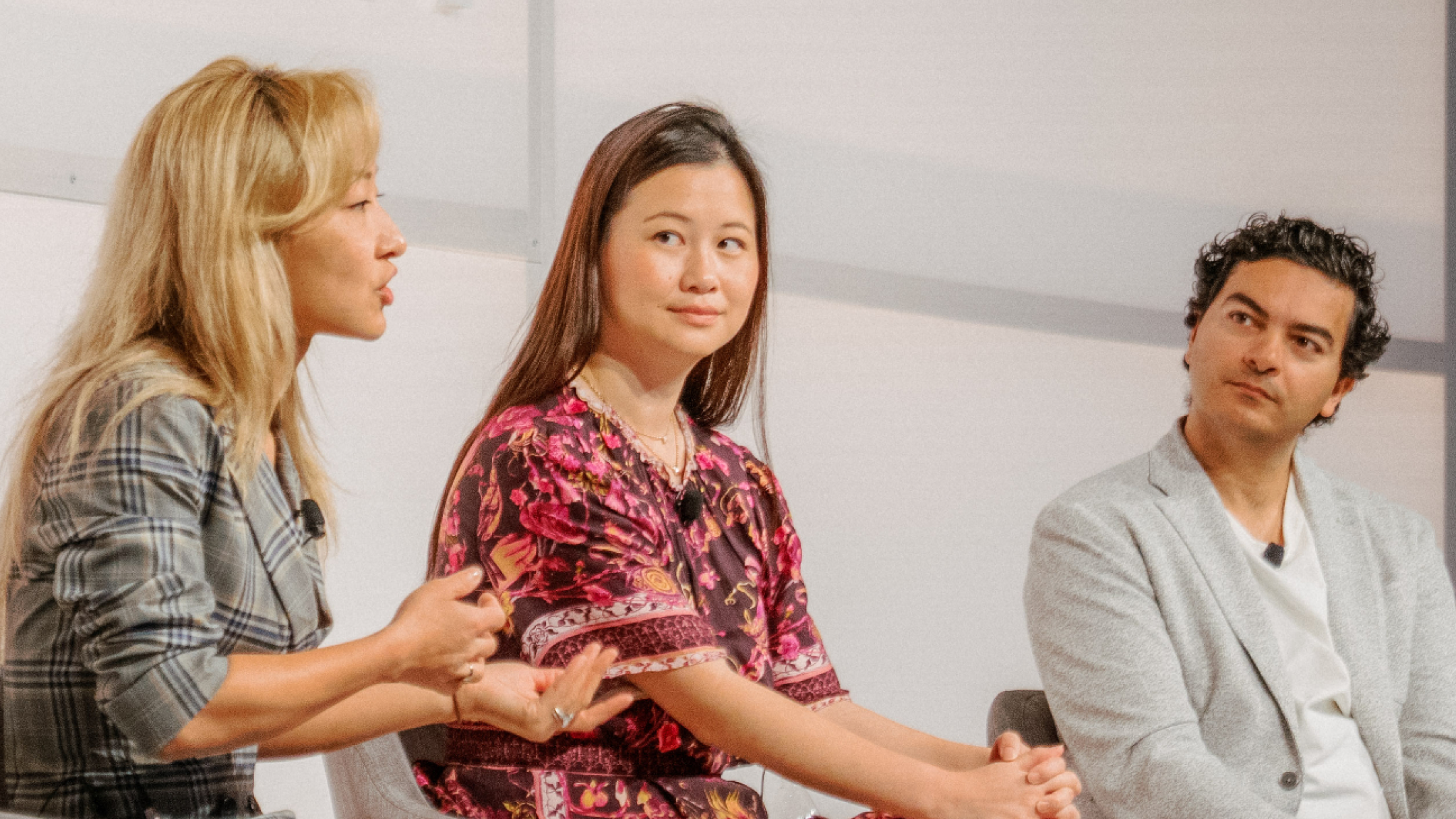A founder’s guide to applying to accelerators

The startup accelerator ecosystem has undergone a remarkable transformation over the last 5 years, moving far beyond the traditional model of generic startup support. The number and type of accelerators have grown and diversified, and founders are looking to utilize them for more than just the basics. According to a recent survey of over 800 early-stage founders in our Mercury Raise community, 1 in 8 were interested in applying to an accelerator. And choosing the right accelerator has become more critical than ever.
In conversations with partners like 500 Global VC and Techstars, along with the Raise community, we’ve been asking: what are accelerators looking for in 2025? And how should founders select the right programs, optimize their applications, and maximize their time at an accelerator in an increasingly competitive space? Let’s talk about it.
Understanding the accelerators of 2025
The modern accelerator landscape is a far cry from the days of just a few select programs clustered in Silicon Valley. As of January 2025, there are now reportedly over 700 startup accelerators in the US alone. Some accelerators continue to go broad, but others have developed deep expertise in specific sectors that require a more specialized approach. (A few of these include the likes of MassChallenge and Techstars, which have tailored a number of their programs to focus on specific industries like healthtech)
There are advantages to both approaches, and it’s wise to get informed about both possibilities, in order to start figuring out what’s best for you.
- Generalist programs like 500 Global VC and YCombinator typically have broad networks of experts across business models and sectors.
- More specialized accelerators typically offer deep industry-specific expertise that can connect you to potential customers.
When it comes to picking the right accelerator, the answer isn’t one size fits all.
Leonard Lee, Head of Accelerator Ops at 500 Global VC, emphasized in a conversation with us that founders need to, “Go find an accelerator where the investor can help you think through that stage of growth”—that is, the stage that you are at now, where you have a unique need—versus applying to accelerators en masse.
Check out our full conversation with Leonard Lee and Iris Sun, Investor at 500 Global VC, on how to get into 500 Global VC.
Accelerator application strategy
With the accelerator landscape evolving rapidly, you’ll need to think critically about what you want out of a particular program before sending your applications. Selecting the best fit requires aligning the accelerator's strengths with your current needs and long-term vision. While just applying to a recognizable name might be tempting, you’ll want to identify clear goals and outcomes for your accelerator participation, whether it’s around raising their next round, going to market, or finding partners.
Here are a few key questions to consider.
Are you seeking investor introductions for fundraising?
For most founders, fundraising is at least one of the main goals they’re looking to achieve, given the programs are often tailored around introducing you to investor and partner connections. If that’s true for you, think about where you are in your fundraising journey. Are you looking for angel and pre-seed investors who specialize in your industry, or are you preparing for a larger round and need exposure to institutional venture capital? For example, if you’re developing a hardware product, you might prioritize an accelerator that connects you to VCs with deep expertise in manufacturing and supply chains.)
Do you need customer introductions?
Consider whether your venture would benefit most from connecting with early adopters, enterprise clients, or channel partners. For instance, a founder building a SaaS platform for small businesses might prioritize a program with strong connections to regional business networks, whereas a healthtech founder might focus on access to hospitals or clinicians.
Are you looking for startup fundamentals from experts?
If you’re a first-time founder and need to nail down your business model or build operational processes, look for programs with a tried and true expert curriculum like 500 Global VC or Techstars.
Are you looking to further develop your MVP?
If product development is your top priority, identify programs with strong technical mentorship or access to prototyping resources. For example, a climate tech founder developing a new material might value an accelerator or founder program like Newlab that provides access to lab facilities or partnerships with universities.
By answering these questions and focusing on your venture’s specific needs, you can find an accelerator that truly supports your goals.
Common concerns around accelerator applications
Applying to accelerators can feel daunting, especially if you aren’t sure what programs are looking for. Common concerns we see among our founder community are being a solo founder, having an unlaunched product, or even deciding how to present your vision.
Getting ahead of these can make all the difference in standing out during the application process.
Solo founders / team composition
“Can I apply as a solo founder?” “Do I really need to find cofounders first?”
While some programs may have an unspoken no-solo-founder policy, solo founders can get into many programs by showcasing their ability to hire talent, pivot, and wear multiple hats all at once.
For solo founders and, conversely, larger founding teams (4+ cofounders), it’s important to stress your team’s background and ability to be agile. Have you built something from scratch before? Have you built in this sector? Do you have full-time, committed employees (not just a bunch of contractors)? These are important to highlight to demonstrate your capability to get things done.
Pre-product startups
“Do I need to have a fully working MVP?”
Startups without a launched product can still get into top accelerators by showcasing a deep understanding of their customers and strong validation of their needs. Founders can be evaluated by means beyond traditional metrics depending on their ability to connect with and address customer pain points. As Iris Sun, Investor at 500 Global VC, explained in our conversation with her, “focusing on customer validation and partnerships even before launching a product” is crucial, as success hinges on clearly articulating the problems from the customer’s perspective before building a solution.
While some programs will have a strong preference for startups with a working product, earlier-stage programs and more specialized programs will be more open to learn how you’re understanding the customer pain points and how you’ve already done some tests around early customer validation.
Current product or larger vision
“For ‘what problem do you currently solve’, should I be answering with my current product or broader vision?”
The third most common question from the founders has been whether to pitch the current iteration of the product or to pitch a larger vision of the company, particularly when answering “what problem do you solve” in the application.
Earlier this year, we discussed this (among other things) with several investors from Techstars: Ahmed Mirza, Investor at across multiple Techstars programs; Sylvia Bouloutas, Investor at Techstars SF; Vance Dekker, Investor at Techstars NYC; and Steve Bernard, Investment Associate at Techstars Boston. Their recommendations? Provide a clear, concise description of the current problem and solution you address. Investors want to see that you understand the customer’s immediate pain point and can focus on what they’re willing to pay for, rather than just your broad vision of your technology’s potential. Showcasing a practical application now leaves room to explore larger possibilities later.
Watch our conversation with the Techstars team.
Maximizing your time at an accelerator
Once accepted to an accelerator program, your focus should shift to maximizing the program’s value based on the goals you set originally, whether you’re catalyzing your first fundraise, launching your product, or even building your MVP.
For founders seeking investor connections
Building strong investor relationships during an accelerator program — which, by extension, can help you fundraise down the line — tends to require a mix of calculated preparation, actively leveraging networks, and managing relationships throughout the program. Let’s dive into a few ways you can best optimize for that.
Building your investor list
The foundation of successful fundraising begins with identifying the right investors and building relationships early. Ultimately, for a pre-seed raise, you can expect to build quite a long list of potential investors for your cap table — sometimes even 80-100.
Not sure where to start? Here’s a step-by-step guide on how to build out your investor list and our investor database with over 200 investors.
If your participation in the accelerator includes investment, an investment lead might work with you to start to identify target investors. Once you’ve built your target investor list, you can start reaching out and trying to build connections to those investors. One of the most successful tactics to establish an initial introduction to a potential investor is to build relationships with alumni who have successfully raised from similar investors. (Try cross-referencing your program’s alumni network and investors’ online portfolios to find out who knows who.)
With each interaction with an investor on your target investor list, document and follow up on what that investor specifically asked from you. Even if you meet with investors who aren’t a fit for your needs, this is important. You’ll likely find it helpful to look at trends in feedback from different types of investors as you start to better understand the types of investor your company may resonate with.
Preparing your fundraise documents
Accelerator programs often provide new opportunities to connect with investors daily, so going in with strong fundraising materials is essential. The first drafts will probably be far from perfect, but the sooner you have them ready for feedback, the sooner you can start to revise them with insights from investors on your target list.
There are three key items to build first:
- Your pitch deck
- Your cap table
- And a data room
Your pitch deck is a short (usually 7-10 slides) presentation that explains the problem you're solving, your solution, why it matters, and how you’ll make it a success. A great pitch deck is clear, concise, and compelling. It highlights your vision, backs it up with data or traction, and leaves your audience wanting to know more. For your pitch deck, take full advantage of peer and mentor pitch practice to ensure your pitch is clear, compelling, and tailored to the types of investors you’re targeting.
Your cap table, short for capitalization table, is a spreadsheet or document that lays out the ownership structure of your company. It shows who owns what (equity stakes, shares, and other securities) and how those ownership percentages are divided among founders, investors, employees, and other stakeholders.
The first version of your cap table is actually built before you join the program, when you are looking at the program’s terms. Most accelerator programs are built on SAFEs, a type of convertible note, and you’ll want to model out how much you want to raise in your next round, and how that SAFE will convert given your projected next valuation.
Finally, in conjunction with your pitch deck and cap table, you’ll start to build the early beginnings of a data room. Your data room is a living series of documents, but compiling your pitch deck, financial projections, early cap table, and market research all in one place to start makes it easy for investors to dig deeper into your business (and makes it easier for you to keep track of it!).
Many accelerators will provide a template for your data room and various documents, but if not, here are some tried and true templates from reputable partners.
- YC Seed Fundraising Pitch Deck Template
- Google Sheets cap table template by Pillar VC
- SAFE generator from Mercury
- Visible.VC Data Room Guide
Managing investor relationships
Since creating a sense of urgency and excitement among investors is key to a successful fundraising process, it’s good practice to lay the groundwork for FOMO early in your accelerator program.
One way to do this is by starting to write and distribute investor updates. Regular updates about your progress, wins, and milestones keep potential investors engaged and aware of your growth, even if they’re not yet committed. If you haven’t started these before your accelerator, it would be prudent to start them during the program as you build up your network and try to keep more investors and partners in the loop about your progress.
Another practice to start during your time at an accelerator is to group investors into tiers based on fit and priority. (For more, the Raise community explored this in our chat with Visible.vc founder and CEO, Mike Preuss). For example, prioritize highly engaged investors for early conversations and approach larger or less certain targets later as you build momentum.
From building those investor lists to working on your pitch to building your first investor updates, you’ll be able to leverage your accelerator’s programming lead and potentially investment lead (if your program has one) to build out your full fundraising strategy. Utilizing an accelerator to help with fundraising, especially those with large names like YCombinator, successful alumni networks, and large co-investor networks, can really help to establish a strong strategy for your first institutional fundraise.
The path forward
There are a few last things to keep in mind as you prepare to submit an accelerator application. Accelerators are more diverse and specialized than ever, requiring founders to align strategically with the program that will help with their specific goal. Additionally, accelerators are increasingly competitive to get into. Get to know your program team before applying if you can. Additionally, leverage resources like alumni networks, current cohort members, and partners to choose the right program and take advantage of the program once you’ve been accepted.
Navigating the complexities of the accelerator landscape is no small feat. Given my own background in the accelerator space, I offer quarterly office hours to help founders navigate accelerator applications and host exclusive talks with accelerator leaders through the Mercury Raise program. Whether you’re exploring programs or refining your pitch, our network exists to guide you in the right direction. Find out more about Mercury Raise’s founder community.



